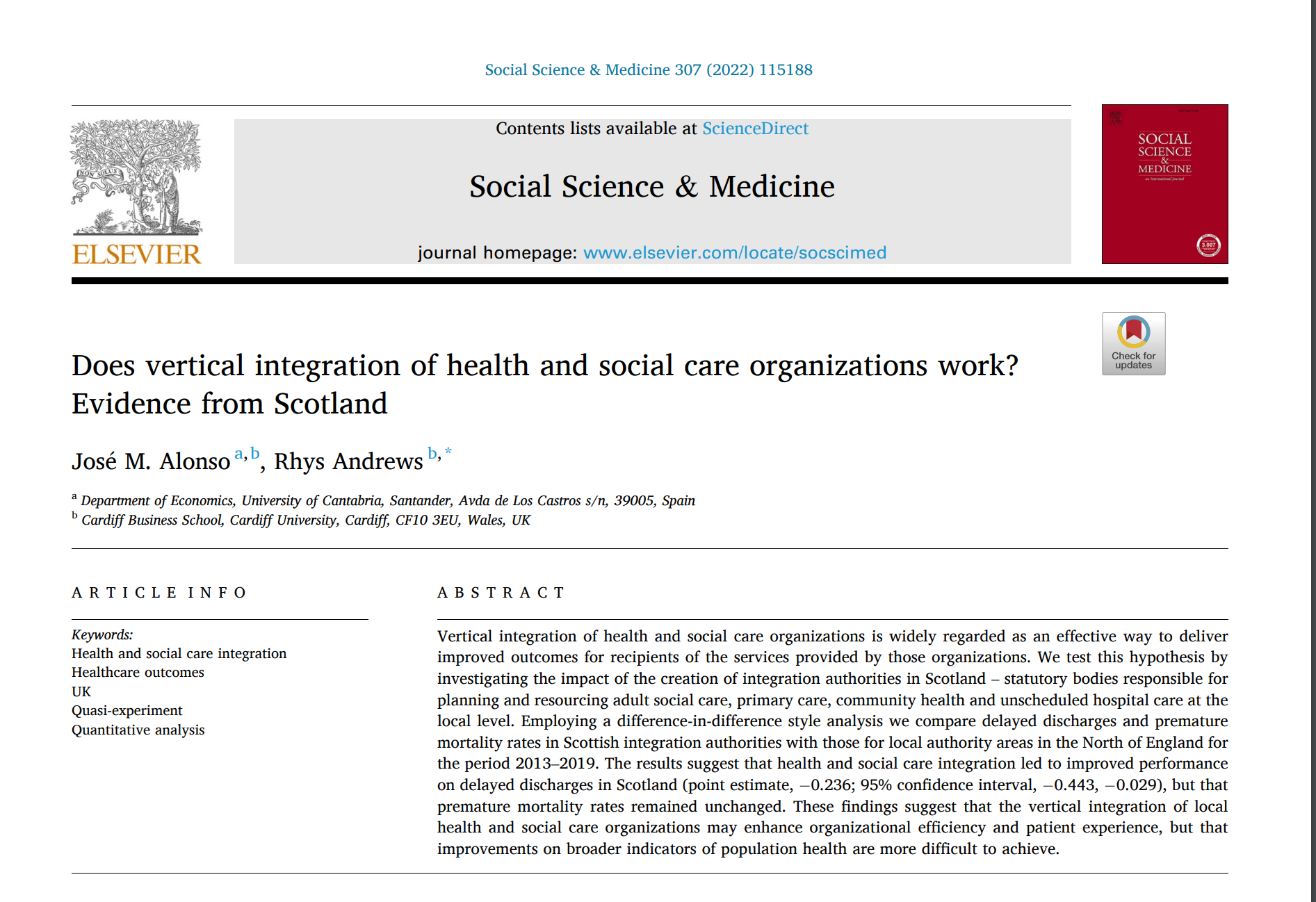Recommended reading: using Difference in Differences to evaluate vertical health and social care integration in Scotland
Recommended reading: using Difference in Differences to evaluate vertical health and social care integration in Scotland
News
Quasi-experimental methods Interest Group
Tools & Methods
Scotland (UK)
UK
Care integration/ coordination
Published:
11 Oct 2023

Care Policy and Evaluation Centre, London School of Economics and Political Science
The integration between health and social care services is at the core of current policies in many developed countries. It is believed that closer integration of the services provided by healthcare and social care organisations is vital for improving system efficiency and effectiveness, as well as population health and long-term care outcomes. For instance, it may help to reduce hospital lengths of stays for the medically fit (delayed discharges) and reduce mortality among patients and service users.
Alonso and Andrews (2022) explain in this paper that there are four main types of integration within healthcare systems: functional (i.e. co-ordination of support functions, such as planning, finance and IT); organizational (i.e. creation of networks, mergers or joint contracts); professional (i.e. joint-working between different groups of healthcare specialists); and, clinical (i.e. co-ordination of patient-centred services). Each of these types of integration can occur horizontally (i.e. across the same level within the system) or vertically (i.e. across different levels within the system).
The authors use a quasi-experimental approach, Difference in Differences (DiD), to compare the impact of the full vertical integration of health and social care organisations in all local areas across Scotland (treated group) against a comparison group (local areas in North-East England)
Main findings:
- Vertical integration of health and social care can enhance patient outcomes.
- Delayed hospital discharges fell after the creation of statutory integration authorities.
- Premature mortality is unaffected by vertical integration of health and social care.
The authors interpret the findings to mean that vertical integration may improve efficiency and the experiences of patients, but that improvements in broader health outcomes are more difficult to achieve.
What does the DiD approach involve?
DiD is a quasi-experimental technique that makes use of longitudinal data to create an appropriate counterfactual to estimate a causal effect. DiD is typically used to estimate the effect of a specific social programme or policy change by comparing the changes in outcomes over time between those receiving the intervention (the intervention/treated group) and a population that is not (the control/comparison group).
A simple description of this approach can be found in a blog by Figarri Keisha. More details are also available in Cameron&Trivedi and Wooldridge books.
The paper by Alonso and Andrews is published in:
Alonso, J.M. and Andrews R. (2022) Does vertical integration of health and social care organizations work? Evidence from Scotland. Social Science & Medicine, 307 https://doi.org/10.1016/j.socscimed.2022.115188

